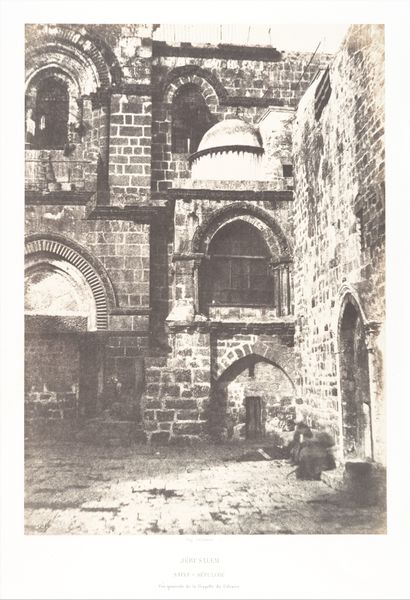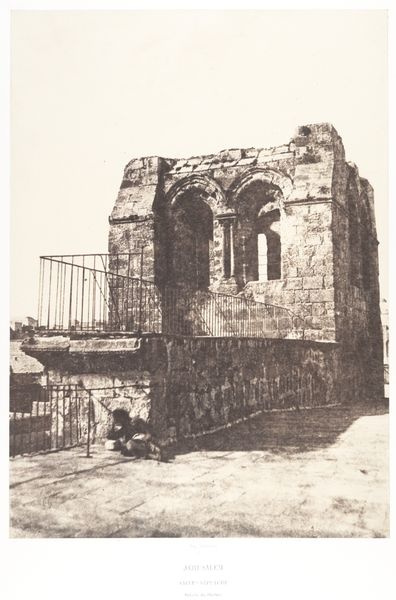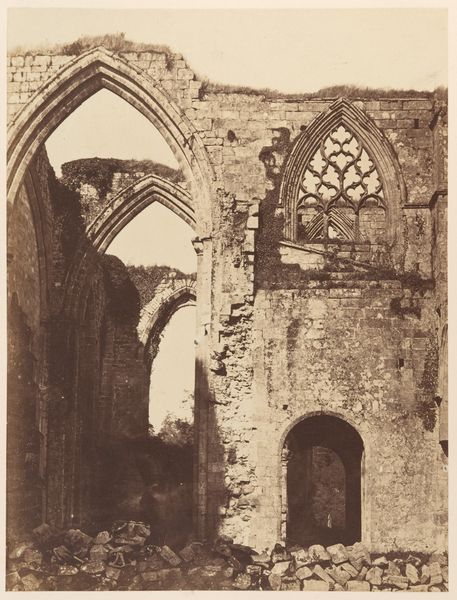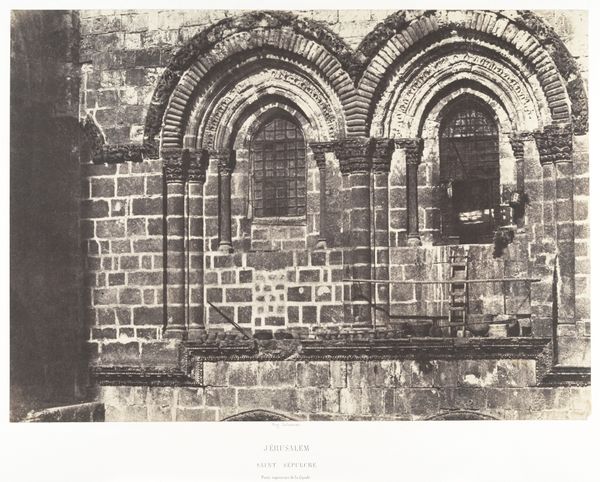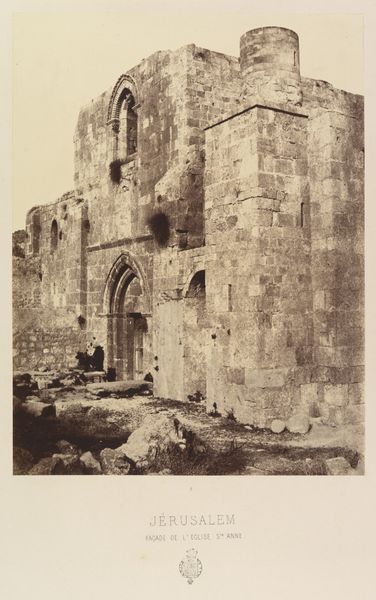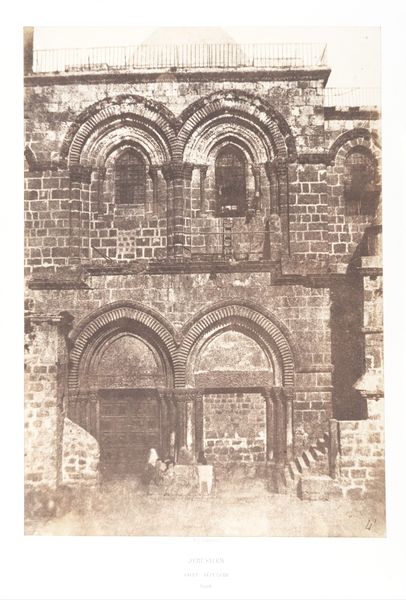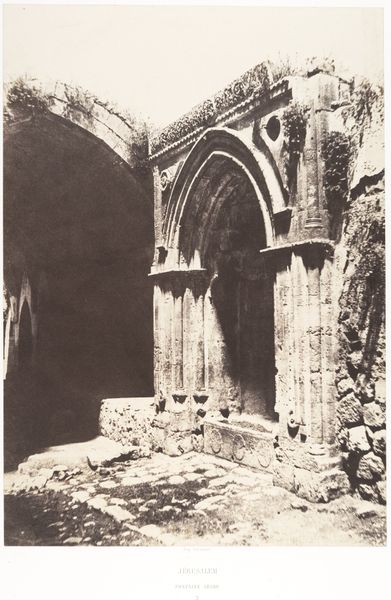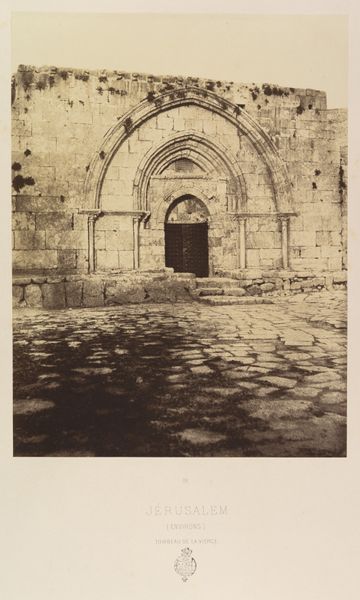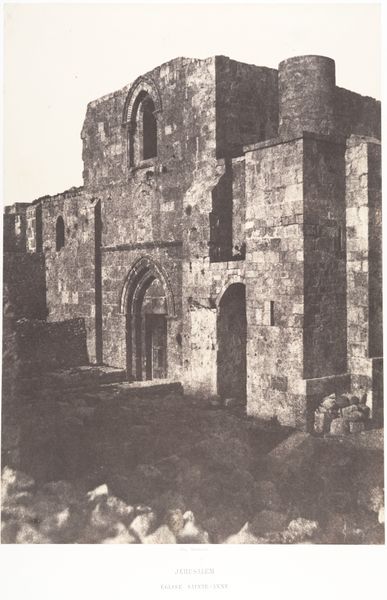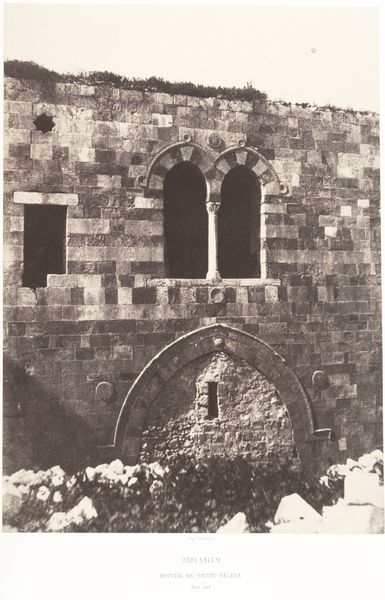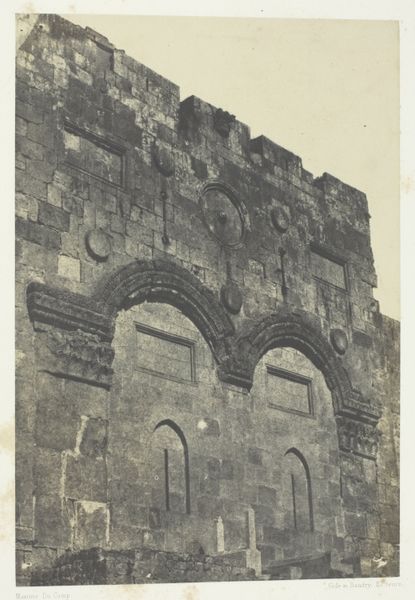
print, photography, gelatin-silver-print, architecture
#
excavation photography
#
black and white photography
# print
#
landscape
#
photography
#
arch
#
gelatin-silver-print
#
monochrome photography
#
islamic-art
#
architecture
#
monochrome
Dimensions: Image: 32.9 x 23.5 cm (12 15/16 x 9 1/4 in.) Mount: 60 x 45.2 cm (23 5/8 x 17 13/16 in.)
Copyright: Public Domain
Auguste Salzmann made this photograph of the Church of the Holy Sepulchre in Jerusalem using the Calotype process, one of the earliest photographic techniques. The Calotype, unlike other methods, relies on a paper negative. Salzmann would have coated paper with silver iodide, exposed it in the camera, and then developed it to create a negative. This negative was then used to make a positive print, resulting in the image you see here. Notice the granular texture and soft focus, inherent to the Calotype. This is because the paper fibers slightly diffuse the light. The warm, sepia tone is also characteristic, caused by the silver particles in the paper reacting with light over time. The Calotype was significant because it allowed for multiple prints from a single negative, a shift towards mass production and consumption of images. Salzmann's choice of this process highlights the intersection of technology, art, and the growing desire to document and share images of the world. It reminds us that even in the 19th century, the means of production influenced how we saw and understood the world.
Comments
No comments
Be the first to comment and join the conversation on the ultimate creative platform.
